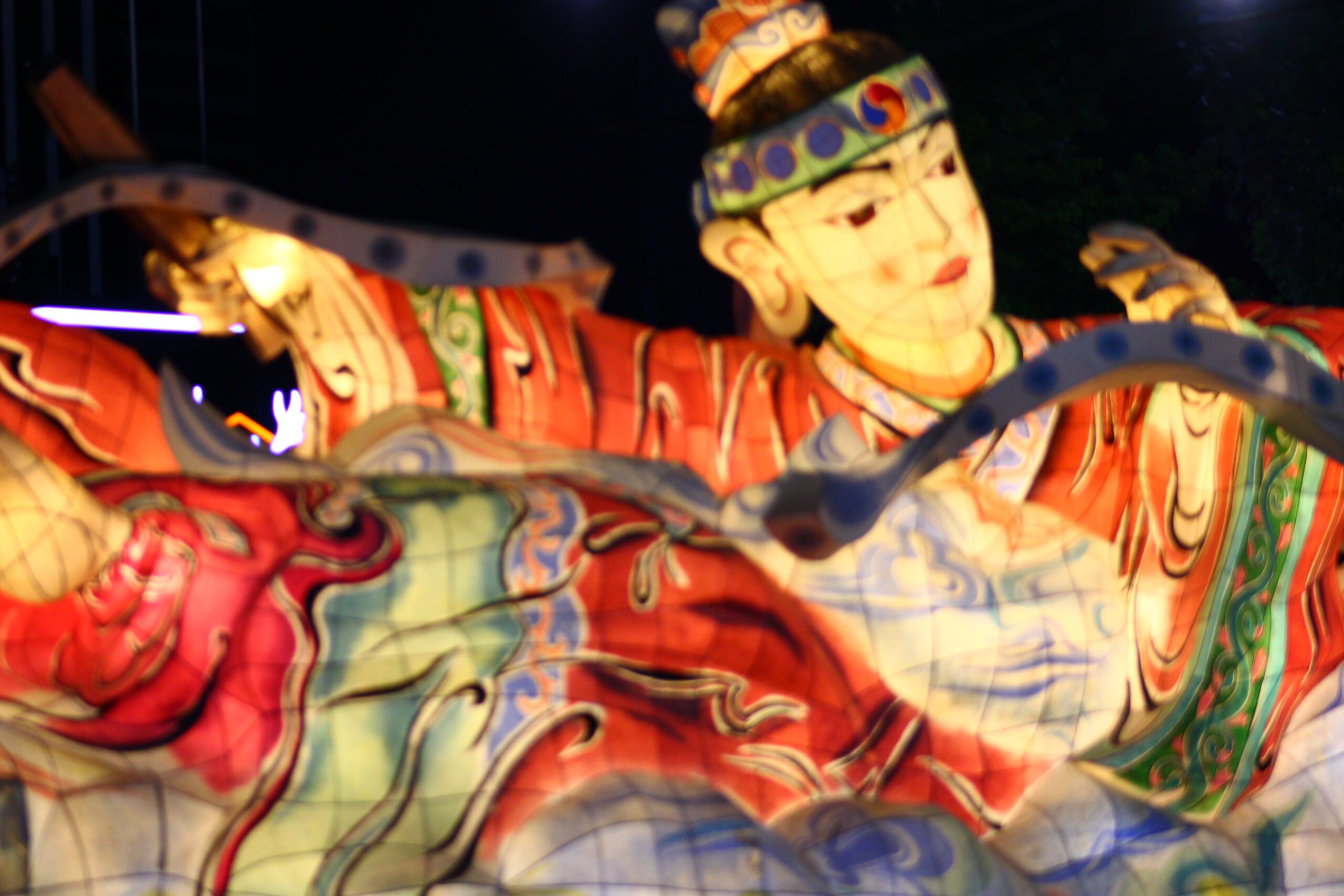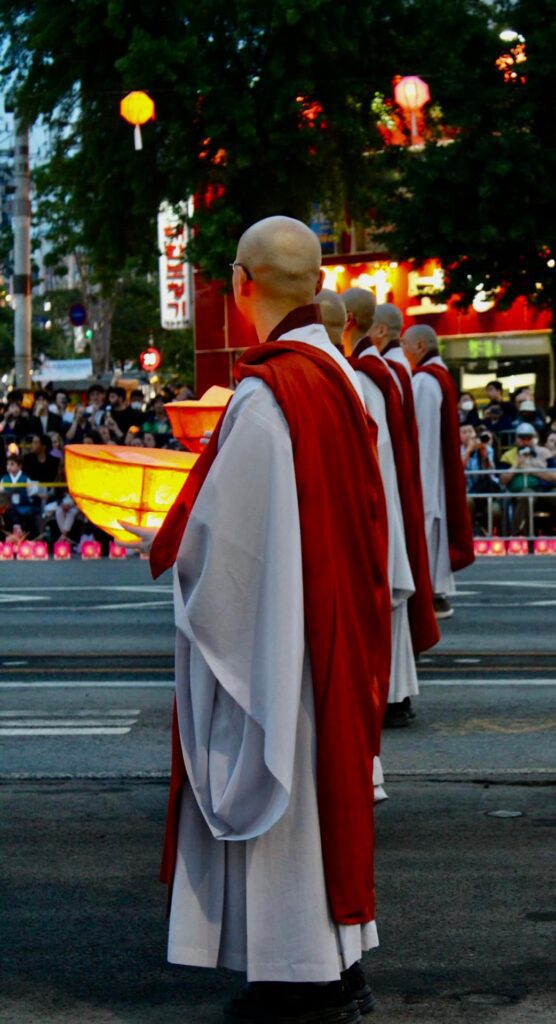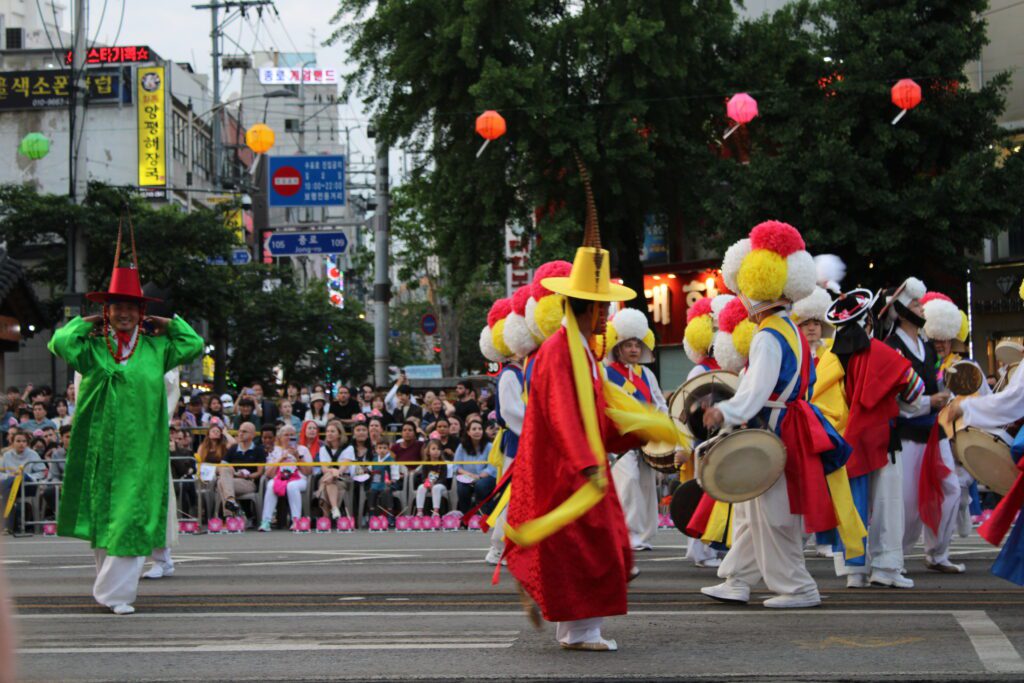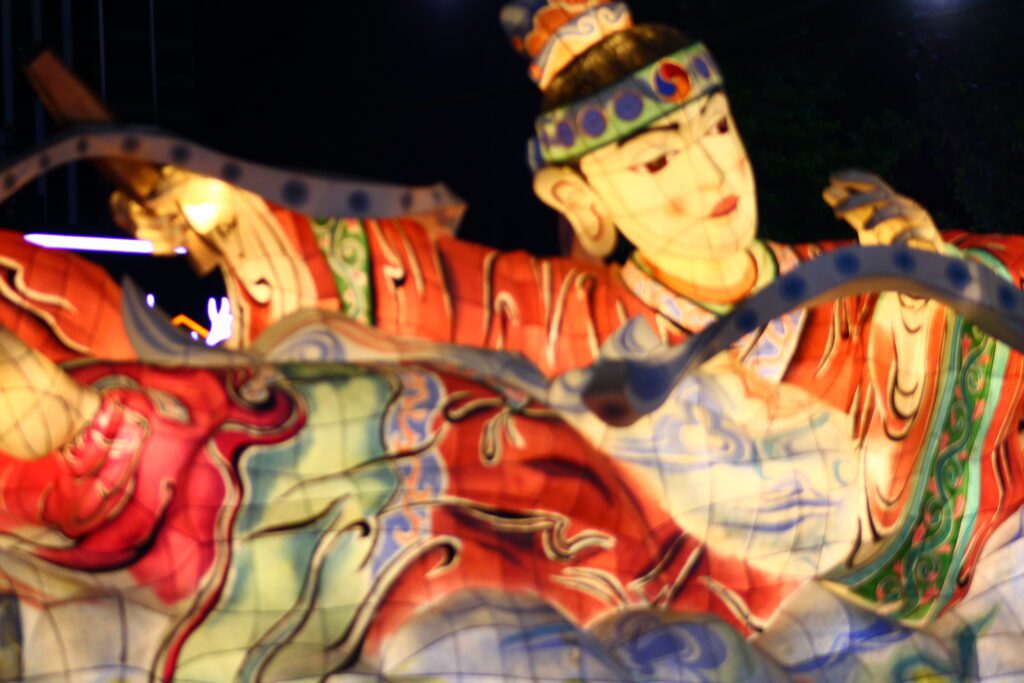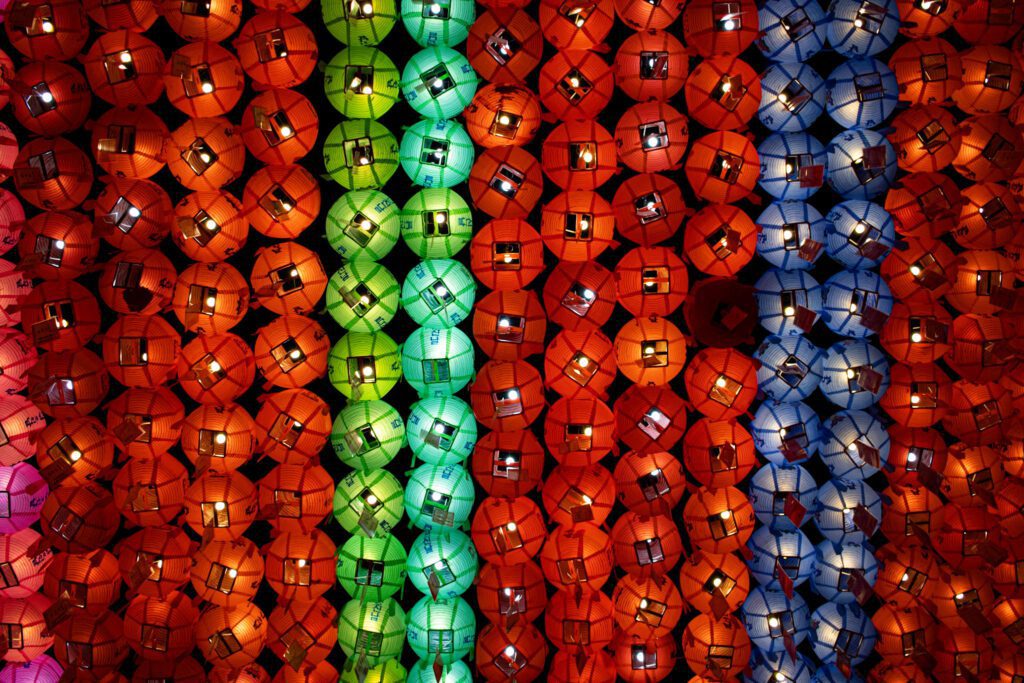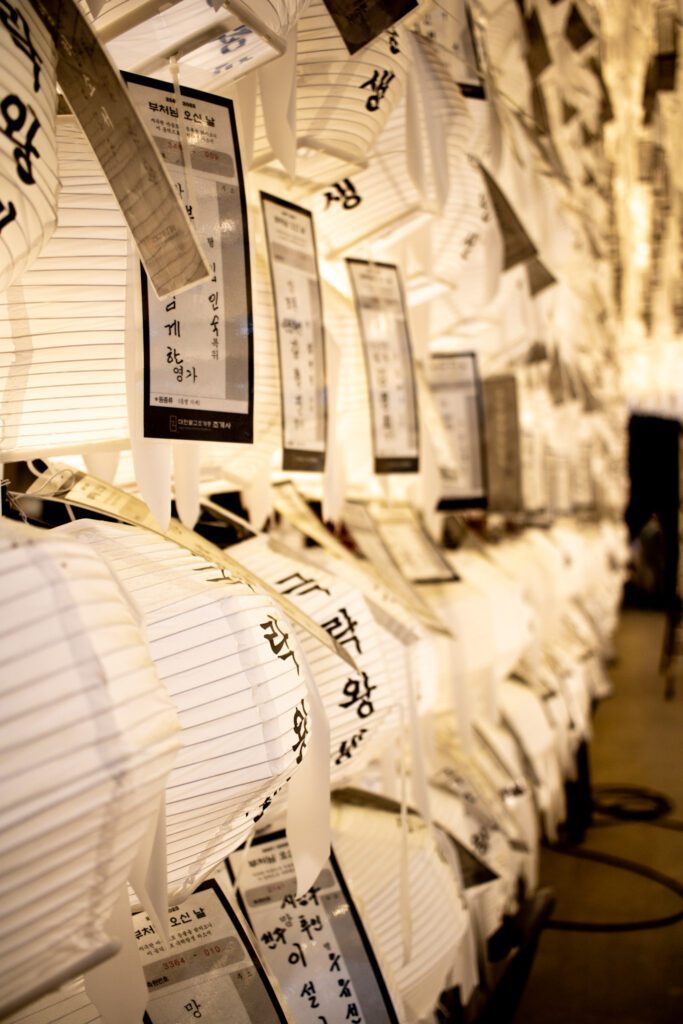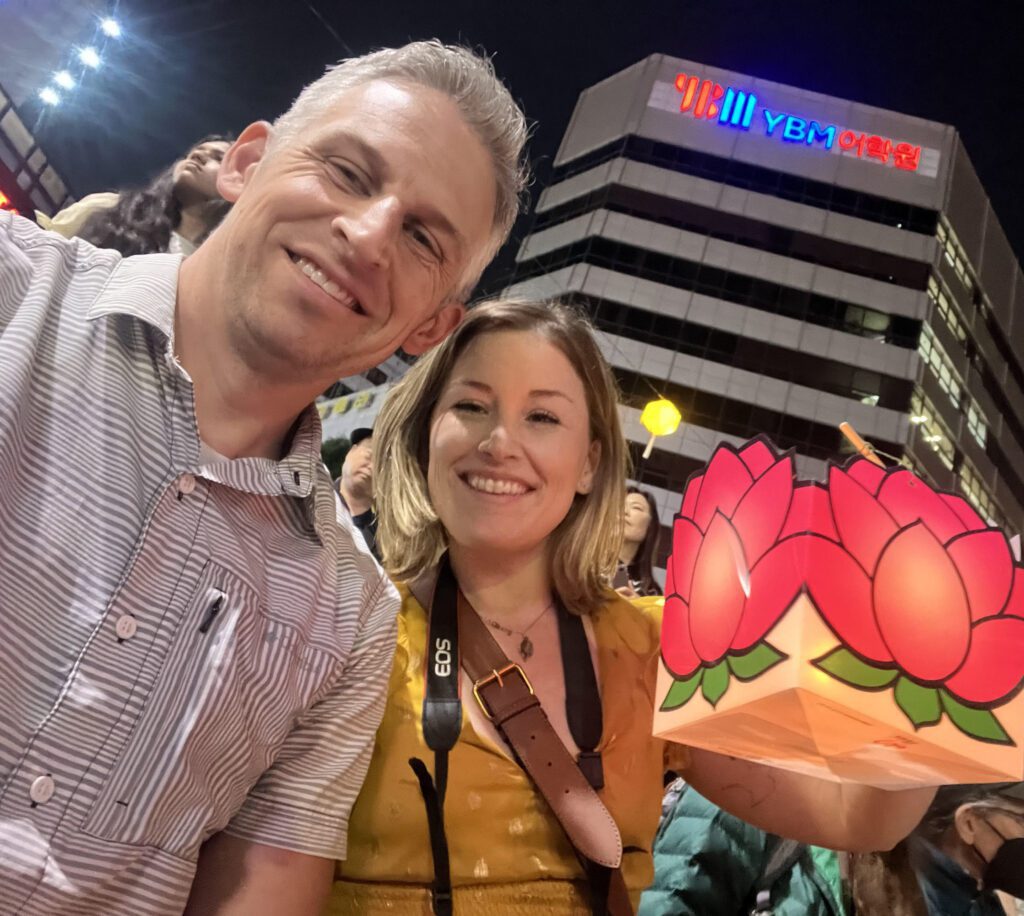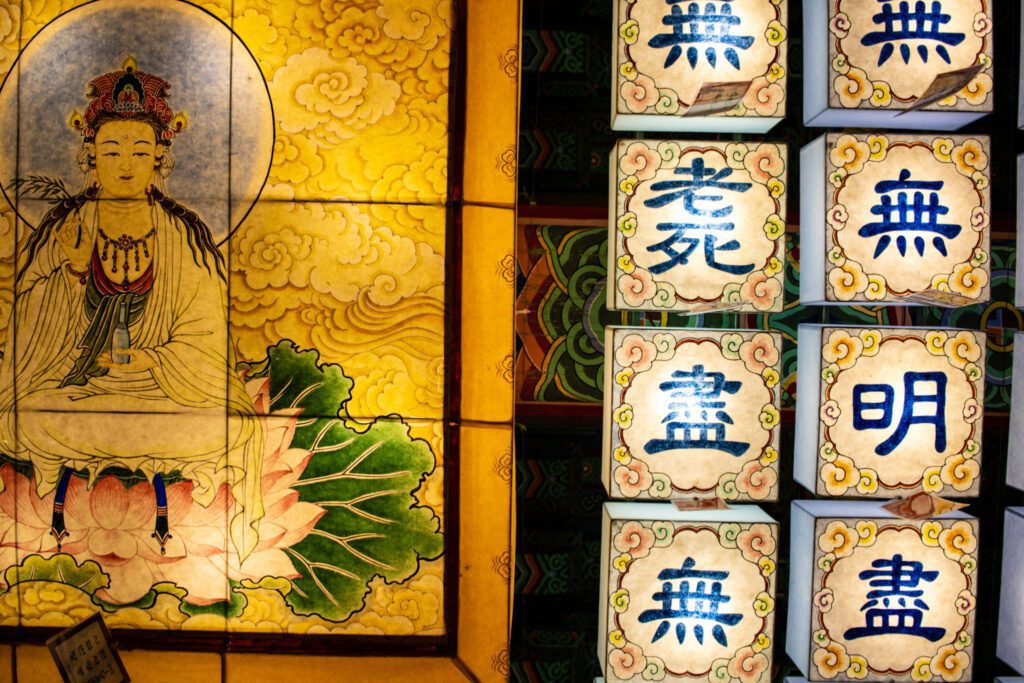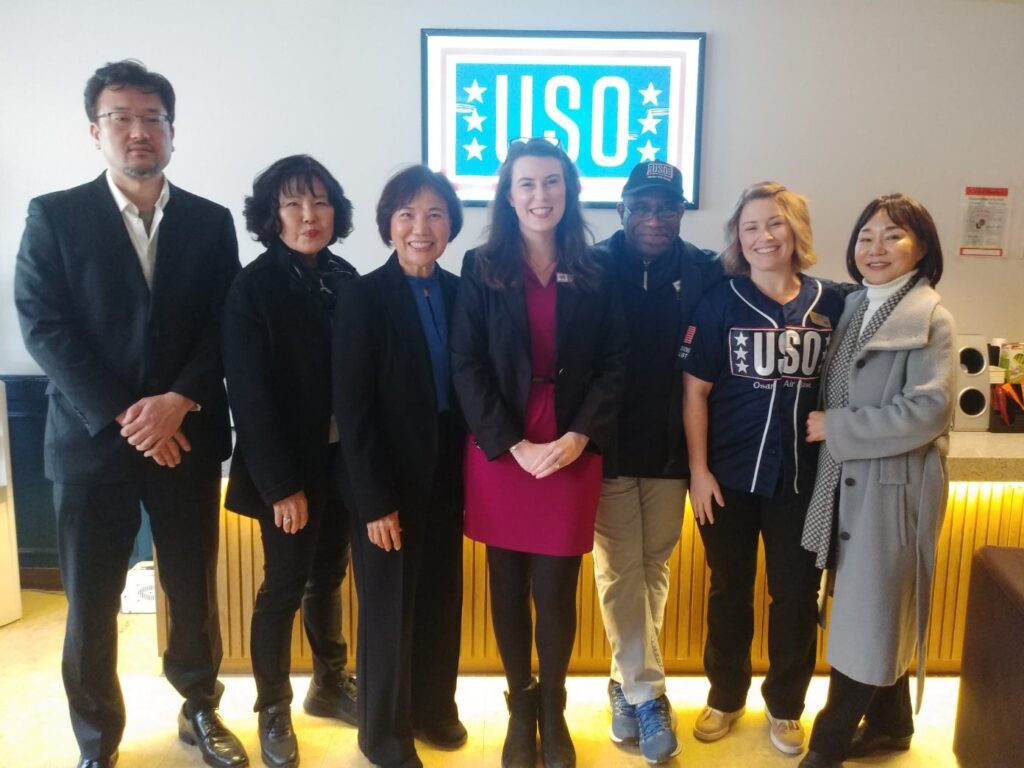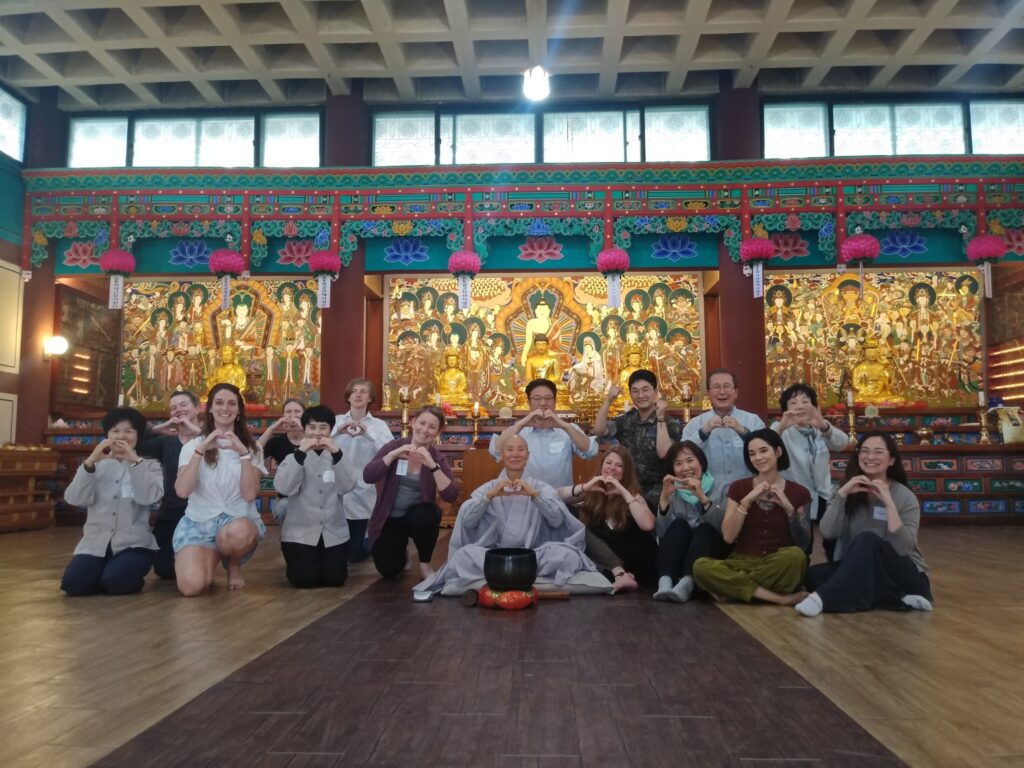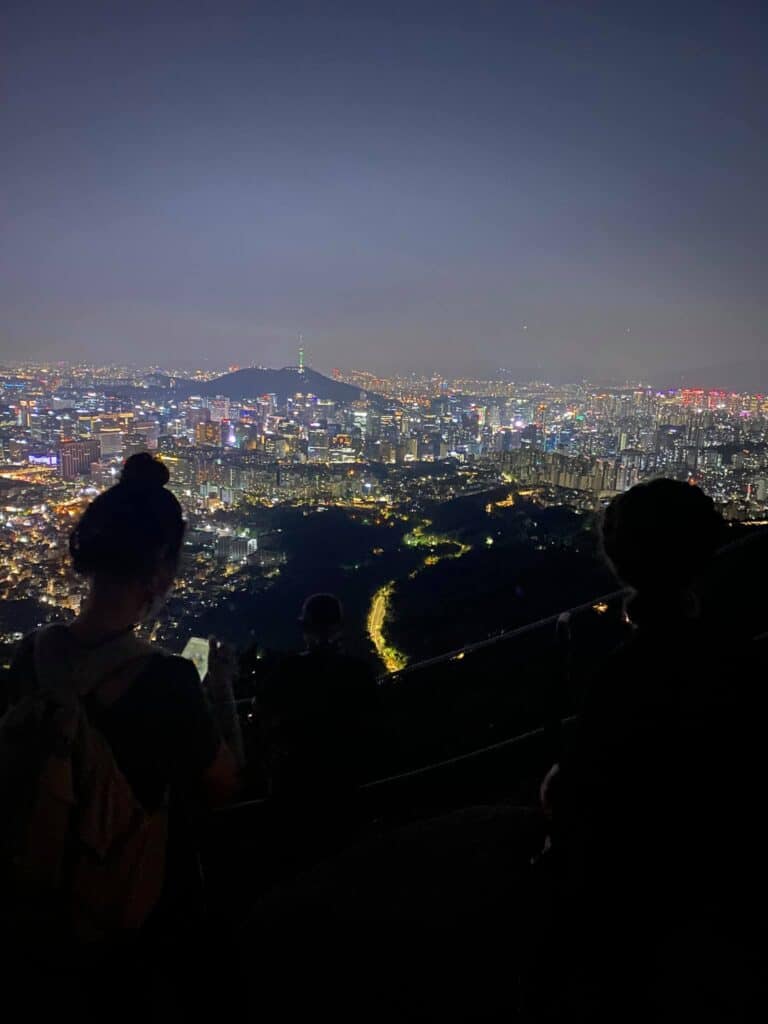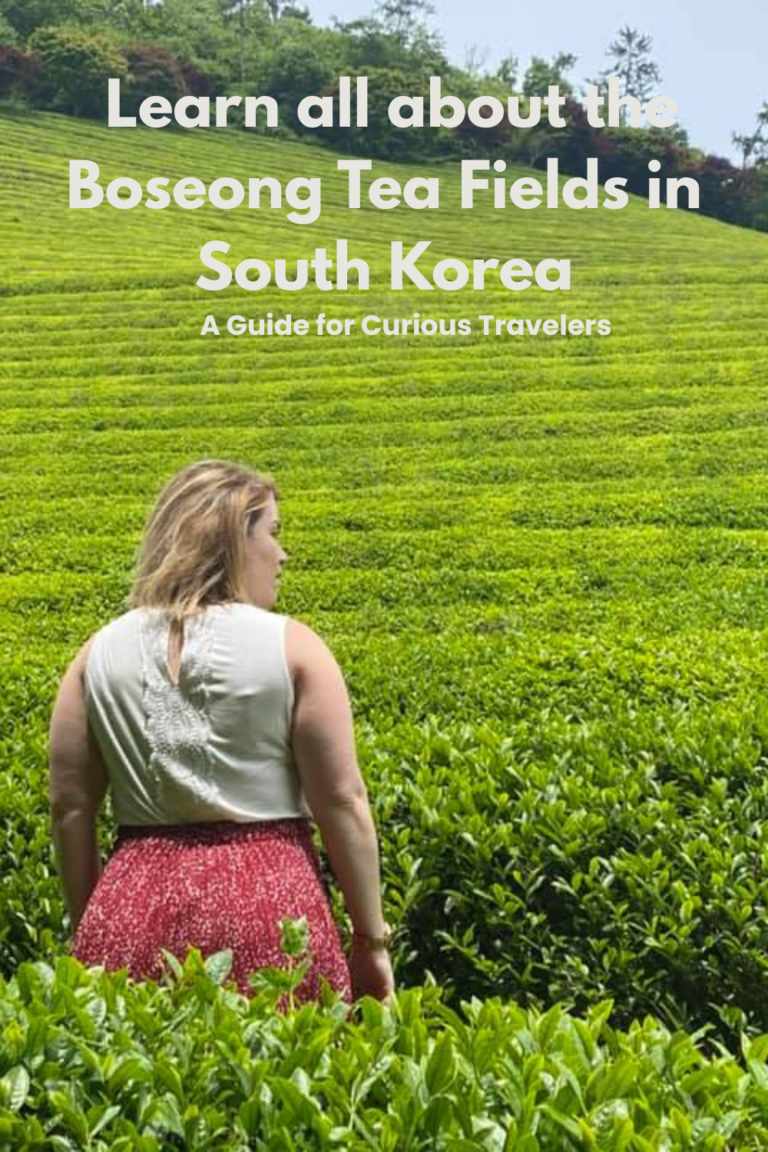The Magic of Seoul’s Lotus Lantern Festival: A Travel Guide to Light & Culture
In 2023, I had the privilege of attending the YeonDeungHoe Festival (연등회) in Seoul, an event that celebrates Buddha’s birthday with breathtaking displays of light, spirituality, and community.
But what made this experience even more meaningful was the way I got there—through an invitation from the International Dharma Instructors Association (IDIA), an organization that became a part of my life in an unexpected but life-changing way.
This Post Pairs Well With
- Hiking Gwanaksan: A Complete Guide to One of Seoul’s Best Mountain Trails
- Boseong Tea Fields in Korea: Stunning Views, Tea Trails, and Travel Tips
- Songnisan National Park (속리산): Hiking to Munjangdae Peak
- Hiking Mt. Inwangsan with Honeytrail Korea
- More South Korea Posts
- Your Guide to Exploring Bukhansan National Park in Seoul
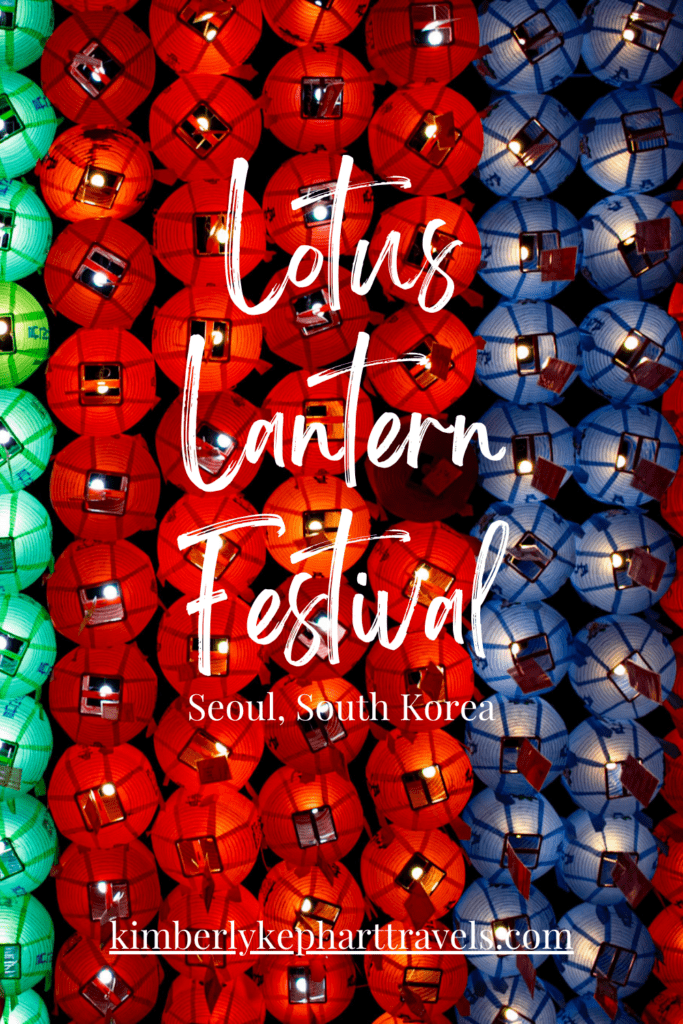
Lotus Lantern Festival (Yeondeunghoe) 2026 At a Glance
Location:
Seoul, South Korea
(Main events centered around Jogyesa Temple, Bongeunsa Temple, and Jongno Street)
Dates:
May 16–17, 2026
(Festival weekend before Buddha’s Birthday)
Buddha’s Birthday:
May 24, 2026
Main Events:
- Grand Lantern Parade: May 16, 7:00 PM–9:30 PM (Jongno Street)
- Eoulim Madang Opening Ceremony
- Lantern Displays at temples and Cheonggyecheon Stream
- Cultural Performances & traditional music
- Hands-on Experiences: lantern-making, meditation, tea ceremonies
Best Places to Watch the Parade:
Jonggak Station, Jongno 3-ga Station, or anywhere along Jongno’s main boulevard
How to Get There:
- Jogyesa Temple: Anguk Station (Exit 6) or Jonggak Station (Exit 2)
- Bongeunsa Temple: Bongeunsa Station (Exit 1)
- Jongno Parade Route: Jonggak or Jongno 3-ga Stations
What is the YeonDeungHoe Festival?
The YeonDeungHoe Festival (연등회), also known as the Lotus Lantern Festival, is an annual Buddhist celebration in South Korea that marks Buddha’s birthday.
This tradition dates back over 1,200 years, and today, it remains one of Korea’s most vibrant and spiritually enriching cultural festivals.
With thousands of glowing lanterns, lively parades, and temple celebrations, the festival symbolizes hope, wisdom, and the spreading of light in the world.
It was one of the most beautiful experiences I had in South Korea.
For travelers, it offers a unique opportunity to witness traditional Korean Buddhist culture while also participating in interactive experiences, making it an incredibly immersive event.
For me, it topped off our time in Korea in a special way, and it’s the kindness, the light, and the connections that really stood out to me.
At a time when I needed light and love in my life, this special event happened.
If you loved the magic of the Lotus Lantern Festival, you’ll probably love the calm beauty of the Boseong Tea Fields too. Think rolling green terraces, quiet trails, and one of Korea’s most breathtaking landscapes.
Plan your visit: Guide to the Boseong Green Tea Field
The Road to the Festival: How It All Began
My journey to the Lotus Lantern Festival started back in 2022 when I was working with the USO at Osan Air Base in South Korea. One of my volunteers, Harry, introduced me to the IDIA (International Dharma Instructors Association), an organization dedicated to bridging cultural gaps between Korean locals and military families through shared experiences.
One day, Harry approached me with an idea: a coffee connection event where military spouses could learn about a unique aspect of Korean culture—lotus lantern making. Not only would this introduce them to the beauty of Buddhist traditions, but it would also give them an opportunity to create something meaningful. As a result, I decided to pitch the idea to the team, believing it could help military spouses feel more connected to their surroundings.

The event was a success. People walked away not just with beautifully crafted lanterns, but with a deeper appreciation for Korean culture. Through that experience, I got to know several members of the IDIA, and what started as a simple partnership grew into genuine friendships. Over time, I was invited to more IDIA-led events, from sound bowl meditations to Buddhist relaxation techniques, all designed to help the Osan community feel more connected to their host country and find ways to reduce stress.
When I received the invitation, it felt surreal. After all, this wasn’t just any festival; instead, it was one of the most significant cultural and spiritual celebrations in Korea. Furthermore, it wasn’t just about witnessing the festival—it was about being welcomed into a tradition, a community, and a deeper connection with Korean spirituality.
The Invitation: A Blessing and a Surprise
When I received the invitation, it felt surreal.
This wasn’t just any festival—it was one of the most significant cultural and spiritual celebrations in Korea, a tradition that has lasted for over 1,200 years.
For me, the invitation wasn’t just about witnessing the festival—it was about being welcomed into a tradition, into a community, and into a deeper connection with Korean spirituality.
Meetings with IDIA excited me and brought on such a learning experience. Something I love about living overseas and traveling.
I felt honored, knowing that my relationship with the IDIA had grown into something beyond just an acquaintance. It symbolized how much I had learned and embraced the culture around me—and how, in return, Korea had embraced me.
The Lotus Lantern Festival: What to Expect in 2026
The Yeondeunghoe (Lotus Lantern Festival) lights up the heart of Seoul in mid-May, combining spiritual ritual and street-level wonder in equal measure. In 2026, with Buddha’s Birthday falling on 24 May, the main festival weekend is set for 16–17 May, making it an ideal spring highlight for your travel content.
Key Events & Schedule
Grand Lantern Parade
Saturday, 16 May | 7:00-9:30 PM
The festival’s signature event: a radiant procession along Jongno Street, beginning at Heunginjimun Gate and winding toward Jogyesa Temple.
Main Festival Activities
Sunday, 17 May | 11:00 AM-7:00 PM
Held on the street in front of Jogyesa Temple, this day is packed with exhibitions, lantern displays, cultural performances, and community activities.
Festival Period (Exhibits & Displays)
April–May (2026)
Lantern displays and cultural installations appear at key locations like Gwanghwamun Square, Songhyeon Green Plaza, Bongeunsa Temple, and Jogyesa Temple leading up to and during the weekend events. LLF+1
Where to Experience the Festival
- Jogyesa Temple & Insadong: Core festival location; lantern displays, performances, and cultural booths make this area ideal for immersive content.
- Jongno Street (Parade Route): The parade’s path along this historic boulevard provides rich visual appeal and vibrant storytelling opportunities.
- **Gwanghwamun Square & Cheonggyecheon Stream: Lantern installations fill this area in the days before the main parade—great for opening-shots in your blog post.
- Bongeunsa Temple (Gangnam): While somewhat quieter than the Jongno area, it’s still a beautiful lantern-lit temple experience and useful for a less-crowded alternative.
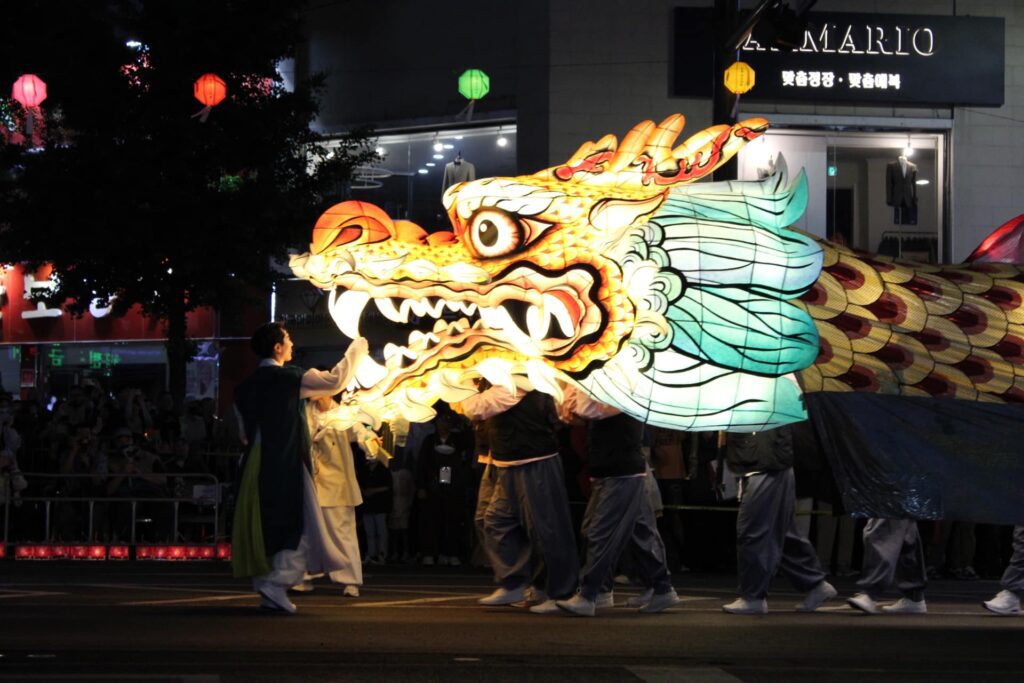
How the Festival Deepened My Connection to Korean Culture
Attending the Lotus Lantern Festival wasn’t just about seeing beautiful lanterns—it was about experiencing the soul of Korea. Through the IDIA, I wasn’t just a visitor; I became part of the tradition. I walked in the lantern parade, joined in Buddhist meditations, and shared meaningful moments with friends who had welcomed me into their world.
One of the most transformative moments was the sound bowl meditation I experienced. As the bowls resonated in deep, soothing tones, I felt a profound sense of peace and connection—not just to myself, but to the people and culture around me.
How to Get to YeonDeungHoe 연등회
Most events are easily accessible via Seoul’s efficient subway system, download and use NAVER to get around Seoul and Korea!
- Jogyesa Temple & Insadong: Jonggak Station (Line 1), Exit 2
- Dongguk University Stadium: Dongguk University Station (Line 3), Exit 6
- Parade Route (Jongno Street): Jongno 3-ga Station (Lines 1, 3, 5)
Arriving at least an hour early is recommended, especially for the parade, as crowds can be massive.
Where to Stay in Seoul
If you aren’t living in Korea already, for convenience, stay near Insadong, Myeongdong, or Jongno.
- Budget: N285Hotel (near Insadong)
- Mid-Range: Nine Tree Premier Hotel Insadong
- Luxury: The Escape Hotel (Jung-gu)
Tips for First-Time Visitors
- Bring a light jacket. Evenings in April can be chilly.
- Wear comfortable shoes. You’ll be walking a lot.
- Get a good viewing spot. Arrive early along Jongno Street for the parade.
- Respect temple customs. Cover your shoulders and remove shoes when entering.
- Try temple food! Vegetarian meals are often served at festival booths.
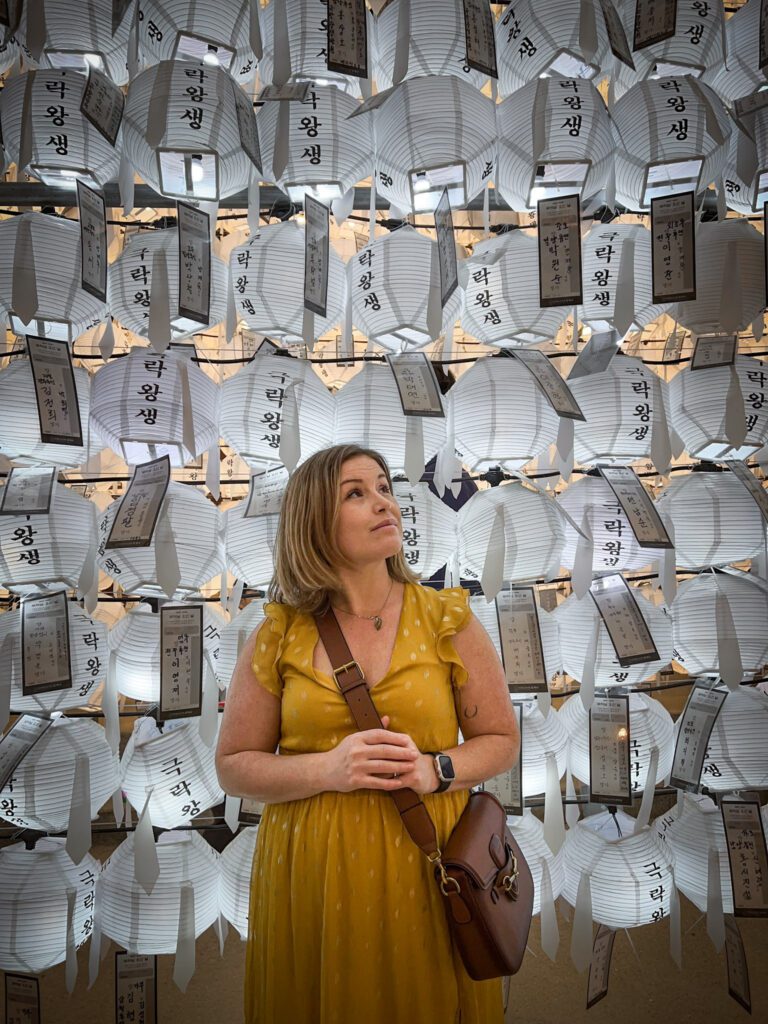
Frequently Asked Questions (FAQ) – Lotus Lantern Festival in Korea
1. What is the Lotus Lantern Festival?
The Lotus Lantern Festival (Yeon Deung Hoe, 연등회) is an annual celebration in South Korea held in honor of Buddha’s Birthday. The festival features a vibrant lantern parade, cultural performances, temple events, and interactive experiences that allow visitors to immerse themselves in Korean Buddhist traditions.
2. When is the Lotus Lantern Festival?
The festival is held each year on the weekend before Buddha’s Birthday, which falls on the 8th day of the 4th lunar month. The exact date varies each year but typically occurs in April or May.
3. Where does the festival take place?
The main events take place in Seoul, primarily around Jogyesa Temple, Bongeunsa Temple, and along Jongno Street where the grand lantern parade is held. However, celebrations and lantern displays can also be found in other cities like Busan, Gyeongju, and Jeonju.
4. Do I need tickets to attend the festival?
No, the Lotus Lantern Festival is free and open to the public. You don’t need tickets for the parade or most cultural events, but some temple experiences or workshops may require advance registration.
5. What are the highlights of the festival?
- Grand Lantern Parade (Jongno Street) – Thousands of glowing lanterns shaped like lotus flowers, animals, and Buddhist symbols light up the night in a breathtaking procession.
- Traditional Cultural Performances – Folk dances, Buddhist rituals, and musical performances take place at various venues.
- Lantern Exhibition – Intricately designed lanterns are displayed at Jogyesa Temple, Bongeunsa Temple, and along Cheonggyecheon Stream.
- Experience Programs – Visitors can participate in activities like lantern-making, meditation, tea ceremonies, and temple food tasting.
6. What time does the lantern parade start?
The lantern parade usually starts at 7:00 PM on the main festival day, beginning at Dongdaemun Gate and proceeding along Jongno Street toward Jogyesa Temple.
7. How can I get to the festival locations?
- Jogyesa Temple – Take Seoul Metro Line 3 to Anguk Station (Exit 6) or Line 1 to Jonggak Station (Exit 2).
- Bongeunsa Temple – Take Seoul Metro Line 9 to Bongeunsa Station (Exit 1).
- Jongno Street Parade – The best viewing spots are along Jongno Street, accessible from Jonggak (Line 1), Jongno 3-ga (Lines 1, 3, 5), or Anguk (Line 3) stations.
8. What should I bring to the festival?
- Comfortable walking shoes – Expect lots of walking and standing.
- A light jacket – Evenings can be chilly in spring.
- Camera or phone – The lanterns are incredibly photogenic!
- Cash – Some food stalls and temple donation activities may only accept cash.
9. Is the festival suitable for children?
Yes! The festival is family-friendly, and kids will love the colorful lanterns, parade, and interactive activities.
10. What are some etiquette tips for attending the festival?
- Be respectful at temples—avoid loud talking, and dress modestly.
- If participating in a lantern-making or tea ceremony event, follow the instructions and show appreciation.
- During the parade, avoid blocking pathways or standing too close to performers.
- If taking photos of monks or temple visitors, ask for permission first.
11. Can I participate in the lantern parade?
Yes! Visitors can carry lanterns and walk in the parade, but you may need to sign up in advance through participating temples or festival organizers.
12. Is the festival accessible for travelers with mobility concerns?
The main areas, like Jogyesa Temple and Jongno Street, are relatively flat and wheelchair accessible. However, some temple grounds have stairs. It’s best to arrive early for the parade to find a good viewing spot.
13. Where can I find more information about the festival?
For the latest schedule and details, visit the official Yeon Deung Hoe website (www.llf.or.kr) or check updates from Jogyesa Temple’s website.
Final Thoughts: Why You Should Experience the Lotus Lantern Festival
The Lotus Lantern Festival is far more than a visual spectacle—it’s a celebration of light, community, and spirituality. The event is deeply rooted in history, with its origins dating back over 1,200 years, yet it remains one of Korea’s most welcoming and inclusive cultural experiences today.
I am forever grateful to the IDIA for inviting me into this world, for showing me the beauty of Buddhist traditions, and for helping me forge deep connections through cultural exchange. If you ever have the opportunity to attend the Lotus Lantern Festival in Seoul, I encourage you to go. It’s not just a festival—it’s a reminder that, no matter where we come from, we all seek light in our own ways.
Have you ever attended a cultural festival that changed your perspective on the world? Let me know in the comments or connect with me on Instagram!
Have you checked out my other blog posts where I talk about life in Korea?
Pin this to Pinterest!


